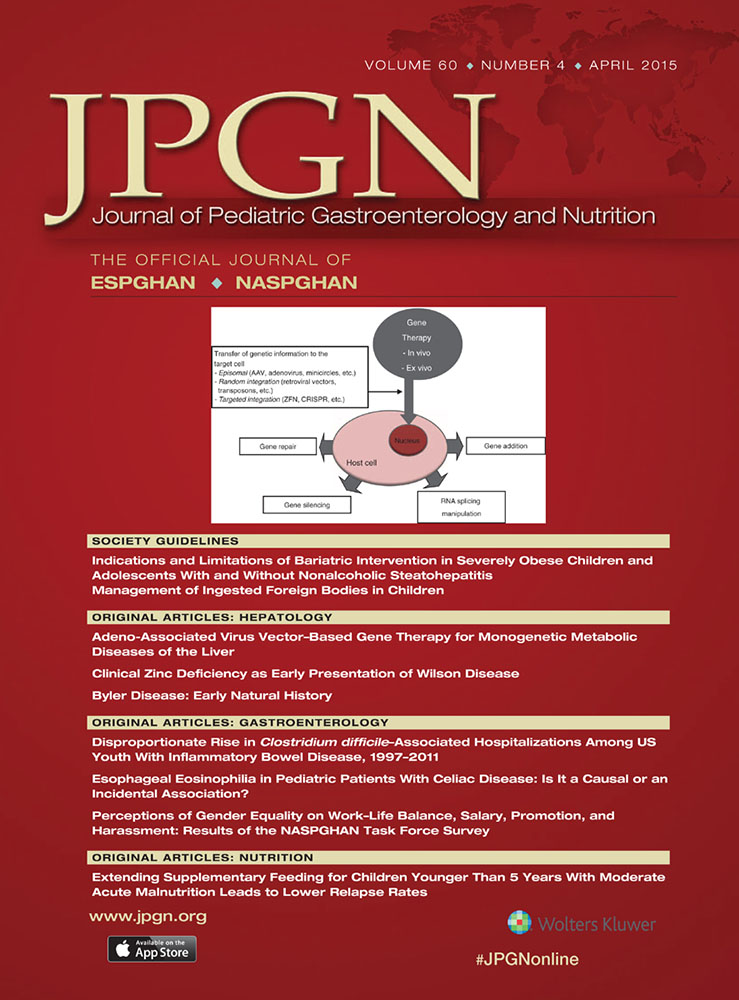Authors' Response
Alexandra P. Bremner
School of Population Health, University of Western Australia, Australia
Search for more papers by this authorTherese A. O'Sullivan
School of Exercise and Health Science, Edith Cowan University, Joondalup, Australia
Search for more papers by this authorWendy H. Oddy
Telethon Kids Institute, University of Western Australia, Australia
Search for more papers by this authorJill L. Sherriff
School of Public Health, Curtin Health Innovation Research Institute, Curtin University, Australia
Search for more papers by this authorOyekoya T. Ayonrinde
Department of Gastroenterology, Fremantle Hospital, Australia
Search for more papers by this authorJohn K. Olynyk
Department of Gastroenterology, Fremantle Hospital, Australia
Search for more papers by this authorLawrence J. Beilin
School of Medicine and Pharmacology, University of Western Australia, Australia
Search for more papers by this authorTrevor A. Mori
School of Medicine and Pharmacology, University of Western Australia, Australia
Search for more papers by this authorLeon A. Adams
School of Medicine and Pharmacology, University of Western Australia, Australia
Search for more papers by this authorAlexandra P. Bremner
School of Population Health, University of Western Australia, Australia
Search for more papers by this authorTherese A. O'Sullivan
School of Exercise and Health Science, Edith Cowan University, Joondalup, Australia
Search for more papers by this authorWendy H. Oddy
Telethon Kids Institute, University of Western Australia, Australia
Search for more papers by this authorJill L. Sherriff
School of Public Health, Curtin Health Innovation Research Institute, Curtin University, Australia
Search for more papers by this authorOyekoya T. Ayonrinde
Department of Gastroenterology, Fremantle Hospital, Australia
Search for more papers by this authorJohn K. Olynyk
Department of Gastroenterology, Fremantle Hospital, Australia
Search for more papers by this authorLawrence J. Beilin
School of Medicine and Pharmacology, University of Western Australia, Australia
Search for more papers by this authorTrevor A. Mori
School of Medicine and Pharmacology, University of Western Australia, Australia
Search for more papers by this authorLeon A. Adams
School of Medicine and Pharmacology, University of Western Australia, Australia
Search for more papers by this author
REFERENCES
- 1O'Sullivan TA, Oddy WH, Bremner AP, et al. Lower fructose intake may help protect against development of non-alcoholic fatty liver in adolescents with obesity. J Pediatr Gastroenterol Nutr 2014; 58: 624–631.
- 2Chui S, Sievenpiper JL, de Souza RJ, et al. Effect of fructose on markers of non-alcoholic fatty liver disease (NAFLD): a systematic review and meta-analysis of controlled feeding trials. Eur J Clin Nutr 2014; 68: 416–423.
- 3Ayonrinde OT, Olynyk JK, Beilin LJ, et al. Gender-specific differences in adipose distribution and adipocytokines influence adolescent nonalcoholic fatty liver disease. Hepatology 2011; 53: 800–809.
- 4Chalasani N, Younossi Z, Lavine JE, et al. The diagnosis and management of non-alcoholic fatty liver disease: practice guidelines by the American Gastroenterological Association, American Association for the Study of Liver Diseases, and American College of Gastroenterology. Am J Gastroenterol 2012; 107: 811–826.




